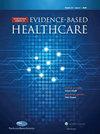神经调节对HTLV-1患者疼痛和功能活动能力的影响:随机临床试验方案
Q3 Medicine
International Journal of Evidence-Based Healthcare
Pub Date : 2022-07-13
DOI:10.17267/2675-021xevidence.2022.e4193
引用次数: 1
摘要
背景:与人t细胞嗜淋巴病毒1型或热带痉挛性截瘫(HAM / TSP)相关的脊髓病的主要症状是腰背部出现高强度疼痛、下肢痉挛和无力、失去平衡和运动困难。脉冲经颅磁刺激(rTMS)已经能够影响皮质可塑性,减少痉挛,增加运动表现和促进镇痛在几个类似的条件。目的:分析脉冲经颅磁刺激(rTMS)神经调节对HAM / TSP患者疼痛和功能活动能力的影响。方法:随机临床试验将在40名参与者中进行,随机分为两组:假手术组(SG) 20例,试验组(TG) 20例。年龄> 20岁,有或没有矫形器,有慢性疼痛(?6个月)腰椎和/或下肢的患者将包括在内。癫痫患者、癌症患者、孕妇、心脏起搏器患者、脑部或颅骨金属植入物患者、非法药物使用者和/或在过去六个月内使用受管制药物者将被排除在外。该方案将连续应用10天,随访8个月。我们的假设是,当根据建议的程序使用rTMs时,将有可能缓解疼痛并改善这些个体的功能活动能力,并具有持久的效果。结论:我们希望rTMS是一种有希望的治疗方法,可以减轻疼痛强度,改善个体的功能活动能力。我们宣布该方案是治疗htlv-1个体减轻疼痛和改善功能活动能力的有希望的资源。是的,这个方案已经应用于6个病人。然而,由于大流行,这项研究不得不停止。然而,尽管样本量小,并且没有按照方案的建议完全应用,但有可能注意到干预的令人满意的结果。因此,该议定书的应用有助于以更安全的方式确定这种治疗方式的结果,并有助于治疗这一人群的症状,有利于提高生活质量。本文章由计算机程序翻译,如有差异,请以英文原文为准。
Effect of neuromodulation on pain and functional mobility in people with HTLV-1: randomized clinical trial protocol
BACKGROUND: The main symptoms of myelopathy associated with human T-cell lymphotropic virus type 1 or tropical spastic paraparesis (HAM / TSP) are the presence of high intensity pain in the lower back, spasticity and weakness in the lower limbs, loss of balance and difficulties in locomotion. Pulsed Transcranial Magnetic Stimulation (rTMS) has been able to influence cortical plasticity, decreasing spasticity, increasing motor performance and promoting analgesia in several similar conditions. OBJECTIVE: To analyze the effect of neuromodulation by pulsed transcranial magnetic stimulation (rTMS) on pain and functional mobility in individuals with HAM / TSP. METHODOLOGY: A randomized clinical trial will be conducted in a sample made up of 40 participants randomly allocated into two groups: Sham Group (SG) with 20 and Test Group (TG) with 20 patients. Individuals aged> 20 years, community walkers with or without orthosis, with chronic pain (? 6 months) in the lumbar region and / or lower limbs will be included. Individuals with epilepsy, cancer, pregnant women, patients with cardiac pacemakers, metallic implants in the brain or skull, users of illicit drugs and / or use of controlled medications in the last six months will be excluded. The protocol will be applied for 10 consecutive days with eight months of follow-up. Our hypothesis is that when using rTMs according to the proposed procedure, it will be possible to relieve pain and improve the functional mobility of these individuals with a long-lasting effect. CONCLUSION: We hope that rTMS is a promising treatment to reduce pain intensity and to improve functional mobility in individuals undergoing active modality. We declare this protocol a promising resource for the treatment of htlv-1 individuals in reducing pain and improving functional mobility. Yes, this protocol has already been applied to 6 patients. However, with the pandemic the study had to be discontinued. However, despite the small sample size and not being fully applied as suggested by the protocol, it was possible to notice a satisfactory result of the intervention. Thus, the application of this protocol can contribute to identify the result of this therapeutic modality in a safer way, as well as assist in the treatment of symptoms of this population, favoring a better quality of life.
求助全文
通过发布文献求助,成功后即可免费获取论文全文。
去求助
来源期刊

International Journal of Evidence-Based Healthcare
Medicine-Health Policy
CiteScore
1.80
自引率
0.00%
发文量
39
期刊介绍:
The International Journal of Evidence-Based Healthcare is the official journal of the Joanna Briggs Institute. It is a fully refereed journal that publishes manuscripts relating to evidence-based medicine and evidence-based practice. It publishes papers containing reliable evidence to assist health professionals in their evaluation and decision-making, and to inform health professionals, students and researchers of outcomes, debates and developments in evidence-based medicine and healthcare.
The journal provides a unique home for publication of systematic reviews (quantitative, qualitative, mixed methods, economic, scoping and prevalence) and implementation projects including the synthesis, transfer and utilisation of evidence in clinical practice. Original scholarly work relating to the synthesis (translation science), transfer (distribution) and utilization (implementation science and evaluation) of evidence to inform multidisciplinary healthcare practice is considered for publication. The journal also publishes original scholarly commentary pieces relating to the generation and synthesis of evidence for practice and quality improvement, the use and evaluation of evidence in practice, and the process of conducting systematic reviews (methodology) which covers quantitative, qualitative, mixed methods, economic, scoping and prevalence methods. In addition, the journal’s content includes implementation projects including the transfer and utilisation of evidence in clinical practice as well as providing a forum for the debate of issues surrounding evidence-based healthcare.
 求助内容:
求助内容: 应助结果提醒方式:
应助结果提醒方式:


